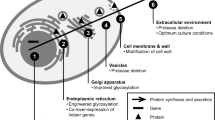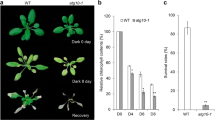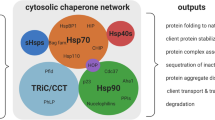Abstract
The endoplasmic reticulum (ER) plays essential roles indispensable for cellular activity and survival, including functions such as protein synthesis, secretory and membrane protein folding, and Ca2+ release in cells. The ER is sensitive to stresses that can lead to the aggregation and accumulation of misfolded proteins, which eventually triggers cellular dysfunction; severe or prolonged ER stress eventually induces apoptosis. ER stress-induced apoptosis causes several devastating diseases such as atherosclerosis, neurodegenerative diseases, and diabetes. In addition, the production of biopharmaceuticals such as monoclonal antibodies requires the maintenance of normal ER functions to achieve and maintain the production of high-quality products in good quantities. Therefore, it is necessary to develop methods to efficiently relieve ER stress and protect cells from ER stress-induced apoptosis. The silkworm storage protein 1 (SP1) has anti-apoptotic activities that inhibit the intrinsic mitochondrial apoptotic pathway. However, the role of SP1 in controlling ER stress and ER stress-induced apoptosis has not been investigated. In this paper, we demonstrate that SP1 can inhibit apoptosis induced by a well-known ER stress inducer, thapsigargin, by alleviating the decrease in cell viability and mitochondrial membrane potential. Interestingly, SP1 significantly blocked increases in CHOP and GRP78 expression as well as ER Ca2+ leakage into the cytosol following ER stress induction. This indicates that SP1 protects cells from ER stressinduced apoptosis by functioning as an upstream inhibitor of apoptosis. Therefore, studying SP1 function can offer new insights into protecting cells against ER stress-induced apoptosis for future applications in the biopharmaceutical and medicine industries.
Similar content being viewed by others
References
Logue, S. E., A. M. Gorman, P. Cleary, N. Keogh, and A. Samli (2013) Current concepts in ER stress-induced apoptosis. J. Carcinogen. Mutagene. 6.
Naidoo, N. (2009) ER and aging-Protein folding and the ER stress response. Ageing Res. Rev. 8: 150–159.
Braakman, I. and N. J. Bulleid (2011) Protein folding and modification in the mammalian endoplasmic reticulum. Annu. Rev. Biochem. 80: 71–99.
Yang, Y., X. Pei, Y. Jin, Y. Wang, and C. Zhang (2016) The roles of endoplasmic reticulum stress response in female mammalian reproduction. Cell Tissue Res. 363: 589–597.
Lee, A. S. (2005) The ER chaperone and signaling regulator GRP78/BiP as a monitor of endoplasmic reticulum stress. Meth. 35: 373–381.
Wong, D. C., K. T. Wong, Y. Y. Lee, P. N. Morin, C. K. Heng, and M. G. Yap (2006) Transcriptional profiling of apoptotic pathways in batch and fed-batch CHO cell cultures. Biotechnol. Bioeng. 94: 373–382.
Szegezdi, E., S. E. Logue, A. M. Gorman, and A. Samali (2006) Mediators of endoplasmic reticulum stress-induced apoptosis. EMBO Rep. 7: 880–885.
Oyadomari, S. and M. Mori (2004) Role of CHOP/GADD153 in endoplasmic reticulum stress. Cell Death Differ. 11: 381–389.
McCullough, K. D., J. L. Martindale, L. O. Klotz, T. Y. Aw, and N. J. Holbrook (2001) Gadd153 sensitizes cells to endoplasmic reticulum stress by down-regulating Bcl2 and perturbing the cellular redox state. Mol. Cell. Biol. 21: 1249–1259.
Doerks, T., R. R. Copley, J. Schultz, C. P. Ponting, and P. Bork (2002) Systematic identification of novel protein domain families associated with nuclear functions. Genom. Res. 12: 47–56.
Gupta, S., L. Cuffe, E. Szegezdi, S. E. Logue, C. Neary, S. Healy, and A. Samali (2010) Mechanisms of ER stress-mediated mitochondrial membrane permeabilization. Int. J. Cell Biol. 2010: 170215.
Lisa, F. Di., R. Menabo, M. Canton, M. Barile, and P. Bernardi (2001) Opening of the mitochondrial permeability transition pore causes depletion of mitochondrial and cytosolic NAD+ and is a causative event in the death of myocytes in postischemic reperfusion of the heart. J. Biol. Chem. 276: 2571–2575.
Gupta, S., G. E. Kass, E. Szegezdi, and B. Joseph. (2009) The mitochondrial death pathway: A promising therapeutic target in diseases. J. Cell. Mol. Med. 13: 1004–1033.
Kim, E. J., W. J. Rhee, and T. H. Park (2001) Isolation and characterization of an apoptosis-inhibiting component from the hemolymph of Bombyx mori. Biochem. Biophys. Res. Commun. 285: 224–228.
Lee, J. H., T. H. Park, and W. J. Rhee (2015) Inhibition of apoptosis in HeLa cell by silkworm storage protein 1, SP1. Biotechnol. Bioproc. Eng. 20: 807–813.
Kim, E. J., H. J. Park, and T. H. Park. (2003) Inhibition of apoptosis by recombinant 30K protein originating from silkworm hemolymph. Biochem. Biophys. Res. Commun. 308: 523–528.
Choi, S. S., W. J. Rhee, and T. H. Park (2005) Beneficial effect of silkworm hemolymph on a CHO cell system: Inhibition of apoptosis and increase of EPO production. Biotechnol. Bioeng. 91: 793–800.
Zamzami, N., S. A. Susin, P. Marchetti, and T. Hirsch (1996) Mitochondrial control of nuclear apoptosis. J. Exp. Med. 183: 1533–1544.
Lee, A. S. (2001) The glucose-regulated proteins: Stress induction and clinical applications. Trends Biochem. Sci. 26: 504–510.
Lee, A. S. (1987) Coordinated regulation of a set of genes by glucose and calcium ionophores in mammalian cells. Trends Biochem. Sci. 12: 20–23.
Li, J. and A. S. Lee (2006) Stress induction of GRP78/BiP and its role in cancer. Curr. Mol. Med. 6: 45–54.
Thastrup, O., P. J. Cullen, B. K. Brobak, M. R. Hanly, and A. P. Dawson (1990) Thapsigargin, a tumor promoter, discharges intracellular Ca2+ stores by specific inhibition of the endoplasmic reticulum Ca2(+)-ATPase. Proc. Natl. Acad. Sci. USA. 87: 2466–2470.
Li, W. W., S. Alexandre, X. Cao, and A. S. Lee (1993) Transactivation of the grp78 promoter by Ca2+ depletion: A comparative analysis with A23187 and the endoplasmic reticulum Ca2+-ATPase inhibitor thapsigargin. J. Biol. Chem. 268: 12003–12009.
Tabas, I. and D. Ron (2011) Integrating the mechanisms of apoptosis induced by endoplasmic reticulum stress. Nat. Cell Biol. 13: 184–190.
Kaufman, R. J. (2002) Orchestrating the unfolded protein response in health and disease. J. Clin. Invest. 110: 1389–1398.
Prashad, K. and S. Mehra (2015) Dynamics of unfolded protein response in recombinant CHO cells. Cytotechnol. 67: 237–254.
Author information
Authors and Affiliations
Corresponding author
Rights and permissions
About this article
Cite this article
Cha, Y.J., Baik, J.E. & Rhee, W.J. Inhibition of Endoplasmic Reticulum Stress-induced Apoptosis by Silkworm Storage Protein 1. Biotechnol Bioproc E 23, 194–200 (2018). https://doi.org/10.1007/s12257-017-0424-5
Received:
Revised:
Accepted:
Published:
Issue Date:
DOI: https://doi.org/10.1007/s12257-017-0424-5




